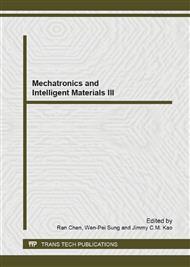p.211
p.215
p.219
p.224
p.230
p.234
p.238
p.244
p.248
Preparation ZnS Quantum Dots via Water-Phase Synthesis Method
Abstract:
With water as the medium, PVP as stabilizer and ammonia as complexing agents and adjusting pH value of the solution, we report an all-aqueous synthesis of highly photoluminescent and stable ZnS quantum dots (QDs) by water-phase synthesis reaction between ZnCl2 and NaS at different temperatures and times. The optimal reaction conditions of PVP-capped ZnS QDs were obtained through experiment as follows: the concentration ZnCl2 and NaS solution both are 1 mM, (PVP):(ZnCl2) = 0.0167 (v/v), (NH3):(ZnCl2)=1:300 (v/v), the optimal reaction temperature is 40 °C, the optimal reaction time is 30 min. With ammonia as complexing agents, Zn(OH)2 can dissolve in ammonia and form to complex ions ((Zn(NH3)4)2+), which make Zn2+ release slowly to control the nucleus growth rate of ZnS, thus obtain small size of nanoparticles. The fluorescence spectra shows that the emission peaks of ZnS QDs around ~395 nm and ~470 nm on the emission spectra, which are consistent with literatures, so nano-ZnS QDs was synthesized successfully in this paper.
Info:
Periodical:
Pages:
230-233
Citation:
Online since:
June 2013
Authors:
Price:
Сopyright:
© 2013 Trans Tech Publications Ltd. All Rights Reserved
Share:
Citation:


